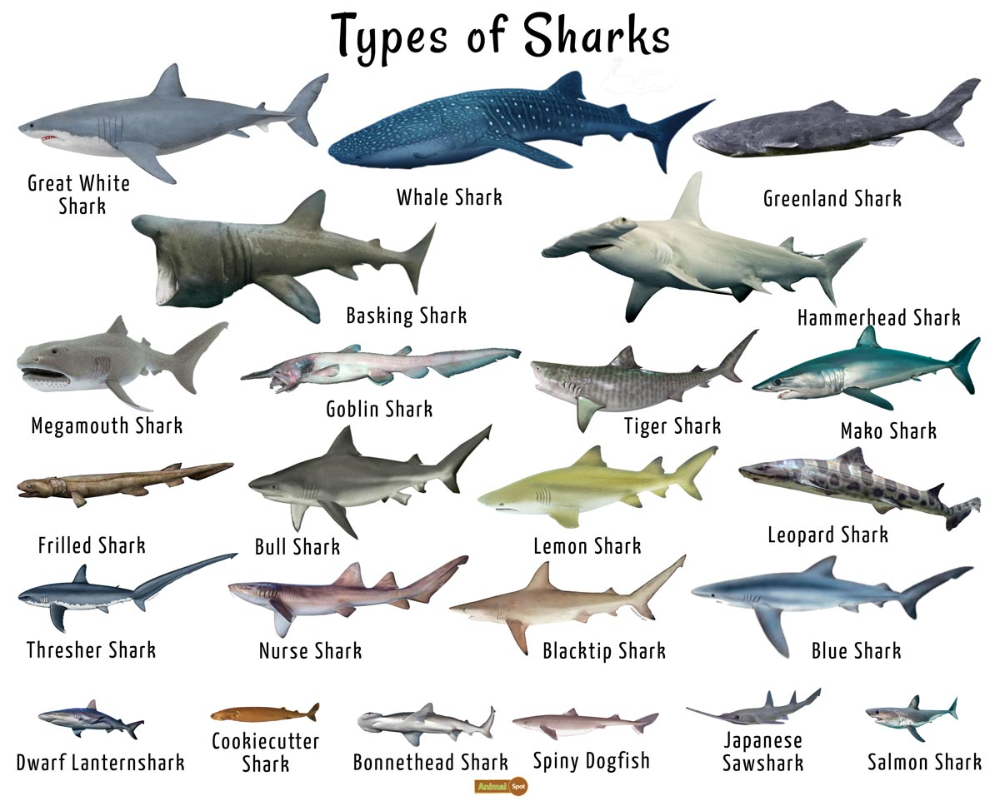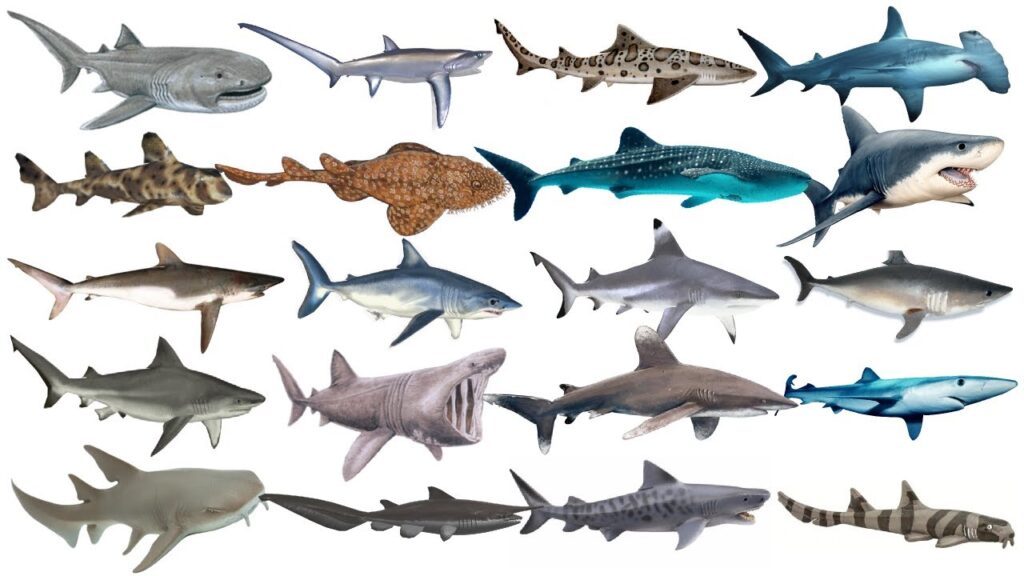Sharks are some of the most fascinating and feared creatures of the ocean.
While many shark species are harmless or even beneficial to marine ecosystems, certain species are notorious for their aggressive behavior and potential danger to humans.
These apex predators are equipped with sharp teeth, powerful jaws, and a heightened sense of smell, making them formidable hunters in their natural habitats.
In this article, we’ll explore 12 of the most dangerous shark species, based on their interactions with humans, size, and predatory behavior.
1. Great White Shark (Carcharodon carcharias)
Arguably the most famous and feared shark species, the Great White Shark is responsible for more recorded attacks on humans than any other shark.
Known for its impressive size (up to 20 feet long) and powerful bite, the Great White is an apex predator found in coastal waters worldwide.
It preys on large marine animals like seals, sea lions, and even whales, but its aggressive nature sometimes leads to unprovoked attacks on humans.
Despite their reputation, most encounters with Great Whites are believed to be cases of mistaken identity, as they often bite humans and then swim away.
2. Bull Shark (Carcharhinus leucas)
The Bull Shark is infamous for its ability to thrive in both saltwater and freshwater environments, including rivers, lakes, and even the Amazon River.
This adaptability makes it one of the most dangerous sharks, as it frequently ventures into areas where humans swim.
Bull Sharks are aggressive and can grow up to 11 feet in length. They are responsible for several unprovoked attacks, particularly in shallow waters, and are considered one of the top threats to human swimmers.
3. Tiger Shark (Galeocerdo cuvier)
Known for its distinctive tiger-like stripes, the Tiger Shark is a large and powerful predator, growing up to 16 feet in length.
It has a diverse diet that includes fish, sea turtles, birds, and even garbage.
Although Tiger Sharks tend to be less aggressive toward humans than Great Whites, they are still responsible for a significant number of attacks.
Their curiosity and willingness to eat almost anything make them unpredictable and dangerous.
4. Oceanic Whitetip Shark (Carcharhinus longimanus)
The Oceanic Whitetip Shark is a highly aggressive species found in open ocean waters. Its long, distinctive pectoral fins and white-tipped dorsal fins make it easy to identify.
These sharks are known to approach and sometimes attack humans, especially in situations where food is scarce or during shipwrecks.
They are responsible for a disproportionate number of attacks, particularly in remote regions of the world’s oceans.
5. Hammerhead Shark (Sphyrnidae family)
Hammerhead sharks, with their unique, wide-set heads, are not only distinctive in appearance but also dangerous to humans.
The most dangerous species within this family is the Great Hammerhead (Sphyrna mokarran), which can grow up to 20 feet long.
While generally not aggressive towards humans, their size and power, combined with their unpredictable behavior, make them a potential threat, especially in areas where they are encountered in schools.
6. Blacktip Shark (Carcharhinus limbatus)
Blacktip Sharks are medium-sized sharks found in tropical and subtropical coastal waters.
They are fast swimmers and often found near shorelines, which increases their encounters with humans.
While they are generally not deadly, Blacktip Sharks are known to bite when threatened, and they are responsible for a fair number of non-fatal attacks on swimmers and surfers.
Their aggressive behavior, especially when feeding or protecting territory, makes them dangerous.
7. Mako Shark (Isurus oxyrinchus)
The Shortfin Mako Shark is one of the fastest sharks, capable of reaching speeds up to 60 miles per hour.
This speed, combined with its sharp teeth and powerful jaws, makes it a formidable predator.
While attacks on humans are rare, the Mako is known for its aggressive nature and ability to inflict serious injury when it does bite.
Mako Sharks typically hunt for fish, squid, and other marine animals, but they have been known to attack humans in rare cases, especially when provoked.
8. Dusky Shark (Carcharhinus obscurus)
The Dusky Shark is a large species found in coastal and deepwater regions around the world.
It is known for its aggressive behavior and has been involved in a number of attacks on humans, though these are less frequent compared to other species.
Dusky Sharks can grow to lengths of up to 12 feet and are often encountered by fishermen, making them a potential threat in areas where people engage in water activities.
9. White Tip Reef Shark (Triaenodon obesus)
While the White Tip Reef Shark is generally not as aggressive as other shark species, it can still pose a risk to humans.
These sharks are found in shallow coral reefs and are known to be territorial.
While they are more likely to bite out of curiosity or if they feel threatened, their small size (rarely exceeding 10 feet) and reluctance to attack humans make them less dangerous than some of the larger species. However, if provoked, they can be quite aggressive.
10. Greenland Shark (Somniosus microcephalus)
Although the Greenland Shark is not typically a threat to humans, it’s worth mentioning due to its status as one of the largest and longest-living sharks.
This deep-water shark, which can grow up to 24 feet in length, is found in the cold waters of the North Atlantic and Arctic Oceans.
While it rarely interacts with humans, its large size and mysterious nature make it an intimidating presence in the waters it inhabits.
11. Whale Shark (Rhincodon typus)
Despite being the largest shark species, growing up to 40 feet, the Whale Shark is a gentle giant and poses no real threat to humans.
Whale Sharks feed primarily on plankton, small fish, and other microscopic organisms, using their huge mouths to filter feed.
Though they are harmless, their immense size and slow-moving nature can still cause injury if a swimmer or diver is accidentally struck by their massive bodies.
12. Sand Tiger Shark (Carcharias taurus)
The Sand Tiger Shark, also known as the Ragged Tooth Shark, has a fearsome appearance with its rows of sharp teeth that protrude even when its mouth is closed.
While it is not typically aggressive toward humans, the Sand Tiger Shark has been known to attack in rare instances, particularly if it feels threatened or cornered.
These sharks are typically found in coastal waters and are often seen near popular dive sites.

Conclusion
While the media often paints sharks as mindless killing machines, most species are not dangerous to humans and rarely pose a threat.
However, certain shark species, due to their size, feeding habits, and aggressive tendencies, are more likely to engage in attacks.
It’s important to remember that shark attacks on humans are extremely rare, and sharks play an essential role in maintaining the health of marine ecosystems.
Understanding these dangerous species can help us respect their role in the ocean and take precautions when swimming or diving in shark-prone waters.
If you find yourself in shark territory, the key is awareness and caution. Following guidelines for shark safety and respecting these magnificent creatures from a safe distance can allow us to enjoy the ocean without unnecessary risk.




Your comment is awaiting moderation.
Matcha Swap